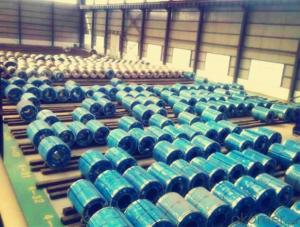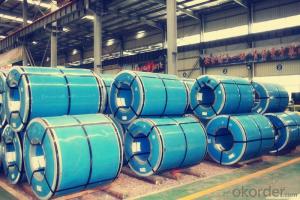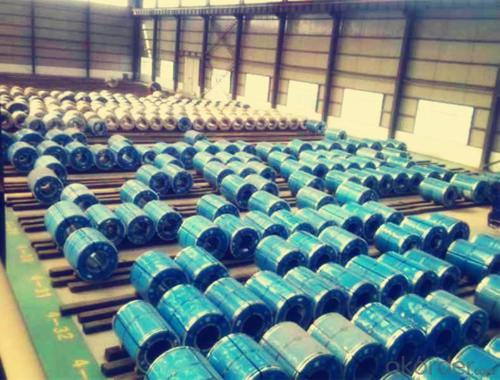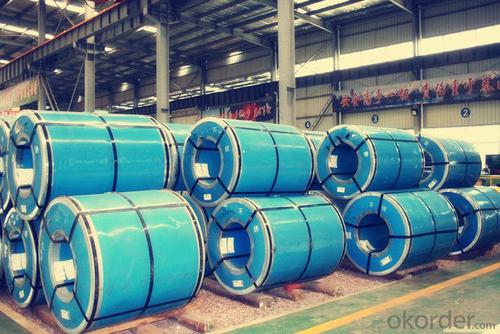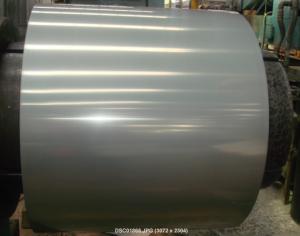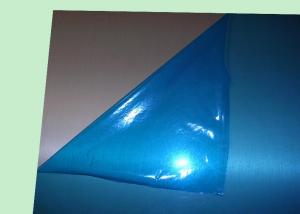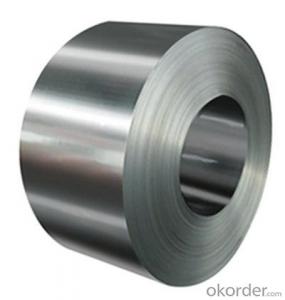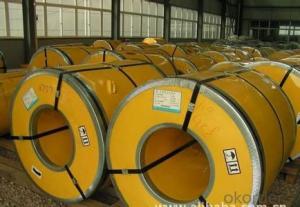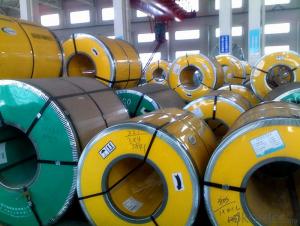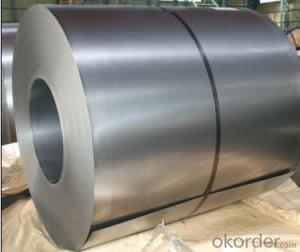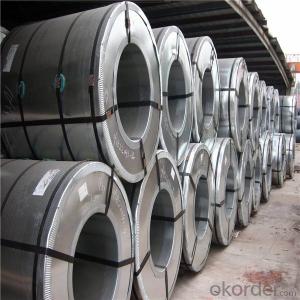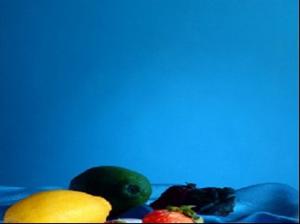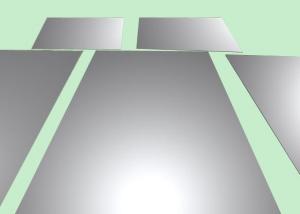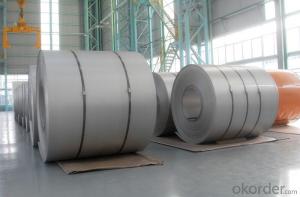Stainless Steel Coil/Sheet/Strip 304 Cold Rolled 2B/BA
- Loading Port:
- Ningbo
- Payment Terms:
- TT OR LC
- Min Order Qty:
- 100 m.t.
- Supply Capability:
- 20000 m.t./month
OKorder Service Pledge
OKorder Financial Service
You Might Also Like
Chemical composition: | |||||||
C | Si | Mn | Cr | Ni | S | P | |
≤0.07 | ≤1.0 | ≤2.0 | 18.0~20.0 | 8.0~11.0 | ≤0.03 | ≤0.035 | |
mechanical properties: | |||||||
Tensile strength σb (MPa) | Conditions yield strength 0.2 sigma (MPa) | Elongation δ5 (%) | Section shrinkage (%) | Hardness | |||
520 | 205 | 40 | 60 | ≤1 | |||
Hot Rolled Stainless Steel Coil 304 Annealing and Pickling No.1 Finish
Stainless steel is a production which not easy rust,acid resistance and corrosion resistance,so it is widely
used in light industry,heavy industry,daily necessities and the decoration industry.
Hot Rolled Stainless Steel Coil 304 Specifications
1.surface:NO.1
2.standard:JIS, AISI, GB
3.width: 0.55m, 0.65m, 1.0m, 1.22m, 1.5m, 2m or requirement
Hot Rolled Stainless Steel Coil 304 Chemical Composition:
(%):C=0.07, Mn=2.00, P=0.045, S=0.030, Si=0.075, Cr=17.5-19.5, Ni=8.0-10.5, N=0.10
Hot Rolled Stainless Steel Coil 304 Physical Properties
Tensile strength σb (MPa) ≥ 520
the conditions yield strength σ0.2 (MPa) ≥ 205,
elongation δ5 (%) ≥ 40
Reduction of ψ (%) ≥ 50,
hardness: ≤ 187
HB; ≤ 90
HRB; ≤ 200H
- Q: Can stainless steel strips be used in elevator components?
- Yes, stainless steel strips can be used in elevator components. Stainless steel is a popular material choice for various applications due to its durability, corrosion resistance, and aesthetic appeal. In elevator components, stainless steel strips can be utilized for different purposes like cladding, decorative finishes, and structural reinforcements. They can be used in elevator doors, panels, frames, handrails, and other parts where strength, hygiene, and resistance to wear and tear are crucial. Stainless steel strips are often chosen in elevator design and construction to ensure long-lasting performance and an attractive appearance.
- Q: What is the embrittlement temperature of stainless steel strips?
- The embrittlement temperature of stainless steel strips may differ depending on the grade and composition of the stainless steel in question. Stainless steel is generally recognized for its exceptional toughness and resistance to brittleness, even at low temperatures. However, embrittlement can occur under certain circumstances. One factor that can contribute to embrittlement is the presence of hydrogen. Stainless steel may experience hydrogen embrittlement in specific environments, such as high-pressure hydrogen gas or environments containing hydrogen sulfide. In these cases, the embrittlement temperature typically ranges from 200-500°C (392-932°F). The embrittlement temperature can also be influenced by the carbon content of the stainless steel. Higher carbon content can result in sensitization, making the steel susceptible to intergranular corrosion and subsequent embrittlement. The embrittlement temperature due to sensitization varies depending on the grade of stainless steel but generally falls within the range of 450-850°C (842-1562°F). It is crucial to note that these embrittlement temperature ranges are approximate and subject to variation based on the specific grade, composition, and processing history of the stainless steel. Therefore, it is advisable to consult the technical data and guidelines provided by the stainless steel manufacturer or industry standards to determine the embrittlement temperature for a particular stainless steel strip.
- Q: How do stainless steel strips resist stress corrosion cracking?
- Stainless steel strips resist stress corrosion cracking (SCC) due to their unique composition and properties. The primary factor that enables stainless steel to resist SCC is the presence of chromium. Chromium forms a passive oxide layer on the surface of the steel, which acts as a protective barrier against corrosive environments. This passive oxide layer, also known as the chromium oxide film, is self-repairing and continually forms even if it gets damaged or scratched. It effectively prevents the penetration of corrosive agents, such as chlorides, into the material, thereby inhibiting the initiation and propagation of stress corrosion cracking. Furthermore, stainless steel strips also contain nickel, molybdenum, and other alloying elements, which contribute to their enhanced resistance to SCC. Nickel improves the stability of the oxide layer and increases the overall resistance to corrosion. Molybdenum, on the other hand, enhances the material's resistance to pitting and crevice corrosion, which are often associated with SCC. The microstructure of stainless steel also plays a crucial role in its resistance to SCC. Stainless steel strips are typically engineered to have a fine-grained microstructure, which further enhances their resistance to corrosion. Fine grain size reduces the susceptibility to intergranular corrosion, a common precursor to stress corrosion cracking. In addition to the material composition, surface treatments and finishes can also contribute to the resistance against SCC. Passivation, pickling, or electropolishing processes can remove contaminants and enhance the formation of the protective oxide layer on the surface of the stainless steel strips. Overall, stainless steel strips resist stress corrosion cracking through the combined effects of the chromium oxide film, alloying elements, fine-grained microstructure, and appropriate surface treatments. These factors work together to provide excellent corrosion resistance, making stainless steel strips a reliable and durable material choice for various applications.
- Q: Are stainless steel strips easy to form and shape?
- Yes, stainless steel strips are relatively easy to form and shape due to their malleability and ductility. They can be easily bent, rolled, or manipulated into various desired shapes without losing their structural integrity.
- Q: How do 111 stainless steel strips perform in acidic environments?
- Stainless steel is generally known for its corrosion resistance and durability, but the performance of 111 stainless steel strips in acidic environments can vary depending on the specific composition of the alloy and the concentration of the acid. In general, stainless steel grades with a higher chromium content, such as 111 stainless steel, exhibit excellent resistance to corrosion in acidic environments. The presence of chromium in stainless steel forms a passive oxide layer on the surface of the material, which acts as a protective barrier against corrosion. This oxide layer, known as the passive film, prevents the acid from reaching the underlying metal and helps maintain the integrity of the stainless steel. However, the performance of 111 stainless steel strips can be influenced by the type and concentration of acid present. Strong acids, such as hydrochloric acid or sulfuric acid, can still pose a risk to stainless steel, even with higher chromium content. The aggressive nature of these acids can lead to localized corrosion or pitting on the surface of the stainless steel. It is important to consider the specific application and concentration of the acid when using 111 stainless steel strips in acidic environments. In some cases, additional measures such as selecting a more corrosion-resistant stainless steel grade or applying protective coatings may be necessary to enhance the performance and longevity of the material. In summary, while 111 stainless steel strips generally offer good corrosion resistance in acidic environments due to their higher chromium content, the specific performance can be influenced by the type and concentration of acid present. Careful consideration of the application and potential risks is essential to ensure optimal performance and durability.
- Q: How do stainless steel strips compare to other metals in terms of cost?
- Compared to other metals, stainless steel strips tend to be more expensive due to their unique properties and superior resistance to corrosion. Despite their higher initial cost, stainless steel strips prove to be cost-effective in the long run as they require minimal maintenance and exhibit excellent durability. In contrast, alternative metals like carbon steel or aluminum may have lower upfront expenses, but they are more susceptible to corrosion and wear, resulting in additional costs for repairs or replacements. Furthermore, stainless steel strips have a high scrap value, making them a more economically sound choice for recycling and sustainability purposes. In conclusion, although stainless steel strips may have a higher initial price, their long-term benefits and advantages make them a worthy investment.
- Q: Can stainless steel strips be used for jewelry making?
- Yes, stainless steel strips can be used for jewelry making. Stainless steel is a durable and versatile material that is commonly used in the production of jewelry. Stainless steel strips can be cut into various shapes and sizes to create different jewelry components such as pendants, charms, earrings, and bracelets. Additionally, stainless steel is known for its resistance to tarnish, corrosion, and discoloration, making it an ideal choice for jewelry that is meant to be worn daily. The material is also hypoallergenic, making it suitable for individuals with sensitive skin or allergies. Overall, stainless steel strips are a reliable and cost-effective option for jewelry makers and can be used to create a wide range of stylish and long-lasting jewelry pieces.
- Q: What are the typical tolerances for stainless steel strips?
- The typical tolerances for stainless steel strips vary depending on the specific requirements of the application and the manufacturing process used. However, in general, the standard industry tolerances for stainless steel strips are typically within a range of +/- 0.005 to 0.010 inches for thickness, and +/- 0.010 to 0.020 inches for width. These tolerances ensure that the stainless steel strips meet the necessary dimensional requirements and can be effectively used in various industries such as automotive, aerospace, and construction. It is important to note that more stringent tolerances can be achieved through specialized manufacturing processes or by utilizing precision equipment and techniques.
- Q: Are stainless steel strips suitable for food processing?
- Yes, stainless steel strips are suitable for food processing. Stainless steel is highly resistant to corrosion, heat, and chemicals, making it a durable and hygienic material for food processing equipment. It is easy to clean, non-reactive, and does not impart any taste or odor to the food being processed.
- Q: What is the hardness of stainless steel band 3/4?
- 304 stainless steel is the United States materials and Testing Association (ASTM) named SUS 304 stainless steel brand abbreviation. 304 stainless steel, 1Cr18Ni9., is a widely used austenitic stainless steel.
Send your message to us
Stainless Steel Coil/Sheet/Strip 304 Cold Rolled 2B/BA
- Loading Port:
- Ningbo
- Payment Terms:
- TT OR LC
- Min Order Qty:
- 100 m.t.
- Supply Capability:
- 20000 m.t./month
OKorder Service Pledge
OKorder Financial Service
Similar products
Hot products
Hot Searches
Related keywords
